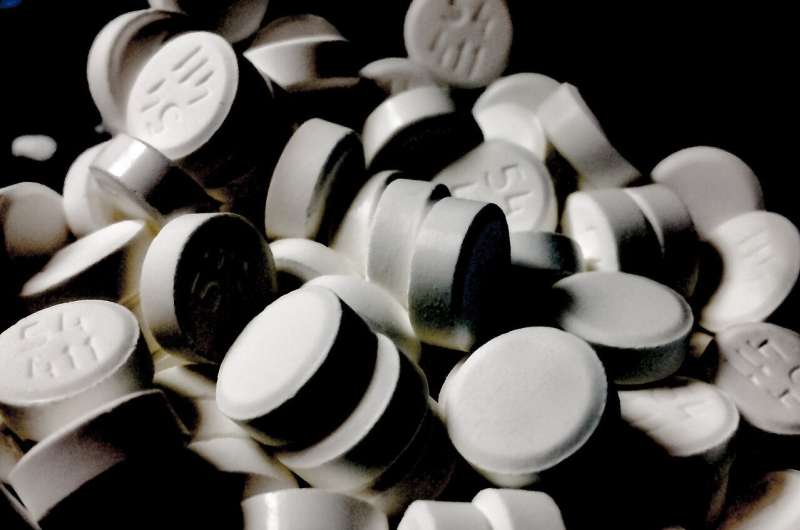
Methadone has long been a gold-standard treatment for opioid addiction. But government regulations mean many patients have to organize their lives around getting and taking it, no matter how well they are doing, a new study has found.
The pandemic made it unsafe for people to queue up daily at methadone clinics, so rules were relaxed to allow patients to take doses home just like other prescriptions. And, advocates say, the change helped people maintain recovery and ought to become permanent.
The new study, published in the Journal of Harm Reduction and conducted by researchers at New York University, Icahn School of Medicine and the City University of New York, interviewed current and former methadone users, people who used illegal opioids but never methadone, and treatment providers.
“It’s like liquid handcuffs,” one woman, a former methadone patient, told the study authors, using a common euphemism for the treatment. “Say you want to go somewhere for a few days, you need take-homes and if they won’t give them to you, there’s nothing you can do. Everyone has trouble with (take-homes), whether it’s losing their job, or they can’t go out of town, or they’re just late, or sick.”
Methadone staves off the painful withdrawal symptoms that otherwise might send people who use opioids in search of street drugs. Medication-assisted treatments, or MAT, like methadone have repeatedly been shown to produce more durable recovery than 12-step programs alone. It’s possible to take home other types of MAT, but methadone is much cheaper.
Federal regulations require patients to take their methadone under daily supervision at a clinic, largely to prevent street sales and overdoses. Guidelines allow for patients to receive up to two weeks, and, in some cases, a month’s worth of doses to take at home once they’re deemed stable enough. Yet many clinics maintain even stricter rules around take-home doses, and most patients on methadone rarely get more than a few days’ worth of take-home doses, the study authors wrote.
The requirement to show up each day for a single dose of medication makes it hard to find and keep a job, travel or return to the rhythms of “normal life,” patients said. Several described missing family gatherings, funerals and weddings because they couldn’t get take-home doses, or were forced to juggle work responsibilities with clinic appointments.
“The idea is to get back to living your regular life, you know? But, in a way, it kind of deters you from doing so sometimes,” one man told the study authors. “… (At) first, I had to go even on Saturdays. I mean, how the hell would I do a regular job like that? How could I get a 9 to 5?”
At the beginning of the COVID-19 pandemic, federal authorities relaxed some of the rules around methadone, allowing “stable” patients to take home up to 28 days’ worth of doses, and slightly less stable patients up to 14 days’ worth.
“There has been a great deal of patient satisfaction with regard to increased flexibilities,” said Neeraj Gandotra, the chief medical director at the federal Substance Abuse and Mental Health Services Administration.
Gandotra said it’s still important for patients early in treatment to take methadone under supervision, because of the overdose risk. But he said that reports of patients selling methadone or accidentally overdosing on the drug have been rare during the pandemic, and that the federal government is “observing” the results of the COVID-19 relaxations.
“If the data in the medical community shows (relaxed methadone regulations) have been beneficial, I’m confident (the Drug Enforcement Agency) would consider those recommendations,” said Patrick Trainor, a local DEA spokesperson.
David Frank, a postdoctoral fellow at NYU’s Rory Meyers College of Nursing and the study’s lead author, said interviews with methadone patients show how onerous regulations lead some to quit the treatment entirely.
Frank, who has taken methadone for the last 15 years, gets a 28-day supply. He said that’s rare—and almost entirely dependent on the clinic a patient is able to get into.
That held true during the pandemic as well, he said: “Some clinics didn’t give a lot of take-homes, or didn’t give enough, or didn’t give any,” he said. “But I do have a general kind of confidence that things are changing for the better.”
Frank said many people use methadone not necessarily to achieve abstinence from opioids, but to give their own lives more stability and safety in an increasingly chaotic drug market. “I think back to when I was using regularly—it was so different. I never overdosed. And now’ it’s a constant risk, any time you’re using, because you know they’re likely to be fentanyl (in your drugs),” he said.
He said he’d like to see daily methadone clinics replaced by something closer to the system for prescribing buprenorphine, another, less potent opioid-based treatment drug that can be more easily taken at home.
Source: Read Full Article
